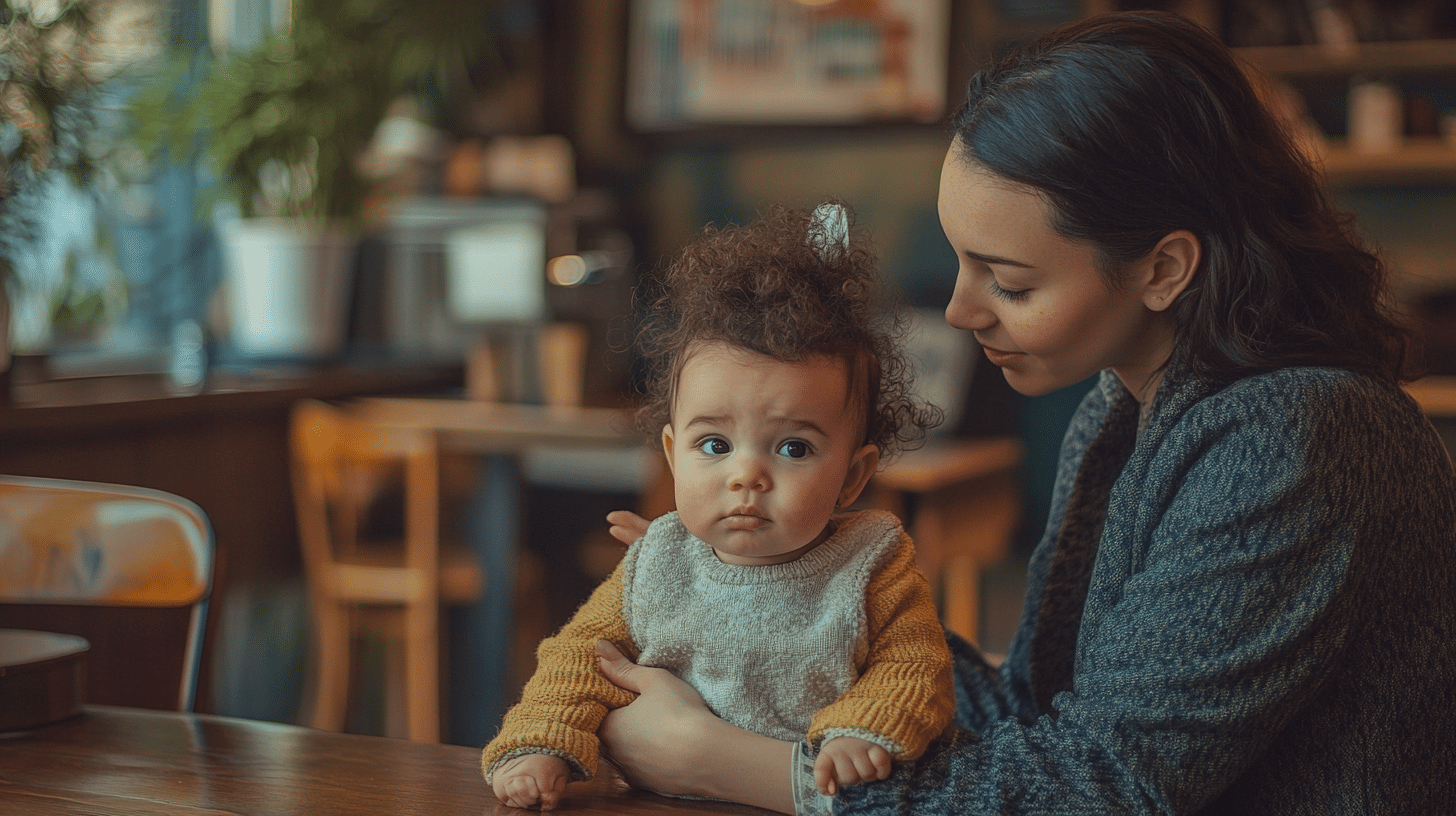It was a chilly, breezy afternoon, and the air had a crisp freshness that only autumn can bring. I decided to take a break from my clinic and spend some time at the local café run by Tom. The café had a comforting warmth and the irresistible smell of freshly brewed coffee. I was nestled in a corner, nursing a hot cup of cappuccino, when the door jingled and in walked Maya, one of my neighbors, with her four-month-old baby, Emma, snug in a carrier against her chest.
I waved her over, and she joined me at the table. Maya’s usual cheerful smile was dimmed by worry, and as she carefully settled Emma into a stroller, I noticed the baby’s scalp. Beneath Emma’s soft brown curls, her scalp looked red and flaky, with yellow, crusty patches clinging stubbornly to her skin.
Maya sighed. “Priya, I don’t know what to do. Emma’s scalp has been like this for weeks. It doesn’t seem to bother her, but it looks so uncomfortable. I’ve tried everything—washing, brushing gently—but nothing seems to help.”
I leaned forward and gently touched Maya’s arm. “It sounds like Emma might have seborrhoea, or cradle cap,” I said, giving her a reassuring smile. “Don’t worry, Maya. It’s very common in infants, and there are ways we can help.”
What is Seborrhoea (Cradle Cap)?
Seborrhoea, also known as seborrhoeic dermatitis, is a common skin inflammation that affects hair-bearing areas of the body. In infants, it most commonly appears on the scalp as cradle cap, but it can also show up on the face, neck, armpits, and even the groin. It can sometimes lead to a form of nappy rash in the diaper area.
I explained to Maya, “Cradle cap isn’t harmful or itchy, but it can look concerning with its flaky, greasy scales and redness.”
What Are the Symptoms of Seborrhoea?
Maya listened intently as I listed the key symptoms:
- Red patches or blotches with scaling.
- A yellow, greasy, scaly crust forming on the scalp (cradle cap).
- The redness often gets worse when the baby cries or gets hot.
- In the diaper area, it may present as a persistent, inflamed nappy rash.
“Unlike eczema, seborrhoea doesn’t usually itch or cause discomfort,” I assured her. “Emma seems comfortable, right?”
Maya nodded. “Yes, she doesn’t seem to notice it at all.”
At What Age Does It Occur?
Seborrhoea typically appears during the first year of life, often starting within the first three months. It’s quite common in infants, and while it might look alarming, it usually resolves on its own by the age of one.
“It’s rare for it to start after two years of age,” I added. “Emma is right in that common age range.”
What is the Treatment for Seborrhoea?
I could see the tension in Maya’s shoulders ease as we talked about simple and effective ways to manage Emma’s condition.
Self-Help Measures
- Gentle Cleansing: Wash Emma’s scalp daily with a mild baby shampoo.
- Scalp Care: For cradle cap, gently rub the scales with baby oil or olive oil to loosen them, then wash away the loose scales.
- Air Exposure: Let the skin breathe by exposing the affected areas to air and sunlight for short periods.
- Avoid Excessive Washing: Over-washing can worsen the condition. Wash gently and avoid using soap on affected areas.
- Nappy Rash Care: Change wet or soiled nappies frequently to keep the diaper area dry and clean.
I smiled and said, “Patience is key, Maya. It often clears up with these basic steps.”
Medical Help
“If things don’t improve,” I continued, “or if the areas look infected or spread beyond the scalp, it’s a good idea to see your doctor. Sometimes a prescription cream containing sulfur or salicylic acid can help clear it up.”
Reassuring Maya
As Maya gently brushed Emma’s curls, I saw her shoulders relax. “Thank you, Priya. I feel so much better knowing this isn’t something serious.”
I smiled. “You’re doing a wonderful job, Maya. Emma’s lucky to have such a caring mom.”
We finished our coffee, and as Maya bundled Emma up to leave, I felt that familiar warmth in my heart. Moments like these—helping a friend, easing a mother’s worry—remind me why I love being a doctor.
Key Points About Seborrhoea in Infants
- Common in infants, especially within the first 3 months.
- Red patches and greasy, yellow scales on the scalp (cradle cap).
- Doesn’t usually itch or cause discomfort.
- Cradle cap and nappy rash can occur together.
- Self-help measures like gentle washing and oil application are effective.
- Medical treatment may be needed for persistent or infected areas.
FAQs About Seborrhoea in Infants
Q: Is cradle cap contagious?
A: No, it’s not contagious. It’s a common inflammatory condition.
Q: Will seborrhoea go away on its own?
A: Yes, in most cases, it clears up by the age of 1.
Q: Can I use regular shampoo for cradle cap?
A: It’s best to use a mild baby shampoo. Avoid harsh products.
Q: How often should I wash the affected areas?
A: Wash gently once a day. Over-washing can make it worse.
Q: When should I see a doctor?
A: If the rash spreads, gets infected, or doesn’t improve with home care, consult a doctor.

